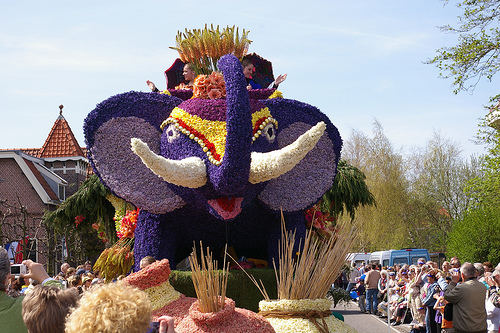I recently visited the Cathedral Basilica of St. Louis, Missouri which has over 83,000 square feet and 41,500,000 pieces of mosaic decoration in it. Visiting this church reminded me of a hidden gem of a church that I visited during my trip to Rome a couple of years ago.
Down a narrow street just behind Santa Maria Maggiore is the church of Santa Prassede. This 9th century basilica is decorated with some of the most beautiful mosaics found in Rome. The Byzantine-style mosaics here date from 822 A.D.
Santa Prassede was founded by Pope Paschal I in the early 9th century to replace the decaying 5th century church and to house the neglected remains of saints that he had removed from the abandoned catacombs. He also included a funerary chapel for his mother Theodora.
The most impressive feature of the church by far is its mosaics which cover the entire apse,
triumphal arch

and the entire interior of the Capella di San Zeno. The small Capella di San Zeno, off the right aisle, was built as a mausoleum for Pope Paschal I's mother Theodora.
The mosaics over the entrance to the Capella di San Zeno

consist of a double row of mosaic busts with the Virgin Mary and Child, St. Prassede and St. Pudenziana in the inner row and Christ and the Apostles in the outer row. At the corners are four saints.
Over the door on the inside of the chapel shows half-length figures of Pope Paschal's mother Theodora (with a square nimbus showing that she was alive when it was made), St. Prassede, St. Pudenziana, and Agnes.
Over the door on the inside of the chapel shows half-length figures of Pope Paschal's mother Theodora (with a square nimbus showing that she was alive when it was made), St. Prassede, St. Pudenziana, and Agnes.
The mosaic is labeled Theodora Episcopa (Theodora the Bishop), a piece of interesting evidence in the argument in favor of female Catholic priests. The Church insists that the Episcopa means just that she was the mother of the Pope, but that could easily have been said more clearly in other ways. Thedora Episcopa means Theodora the Bishop. Above is the Lamb of God on the mount with four stags drinking from the four Rivers of Paradise.
The gold ceiling shows a bust of Christ supported by four winged angels in white.

The mosaics in the Capella di San Zeno are the most significant example of Byzantine artistic culture still visible in Rome.

BASIC INFORMATION:
- Santa Prassede is open 07:30-12:00 and 16:00-18:30.
- The church entrance is located on Via di Santa Prassede, about a block behind Santa Maria Maggiore.
- The main entrance is down Via di Santa Prassede and to the right on Via San Martino ai Monti (but it's not always open).
- The entrance to the church is free, but have €1 coins handy to light up Capella di San Zeno. Otherwise it's difficult to see the mosaics.
NOTE: I apologize for the less than quality photos in this post. At the time, my camera was not the best and I was still learning how to photograph in dimly lit places. But I felt it necessary to use my own photos rather than "borrow" someone else's.
Thank you for visiting.
A Great Europe Trip Planner
Thank you for visiting.
A Great Europe Trip Planner
















































